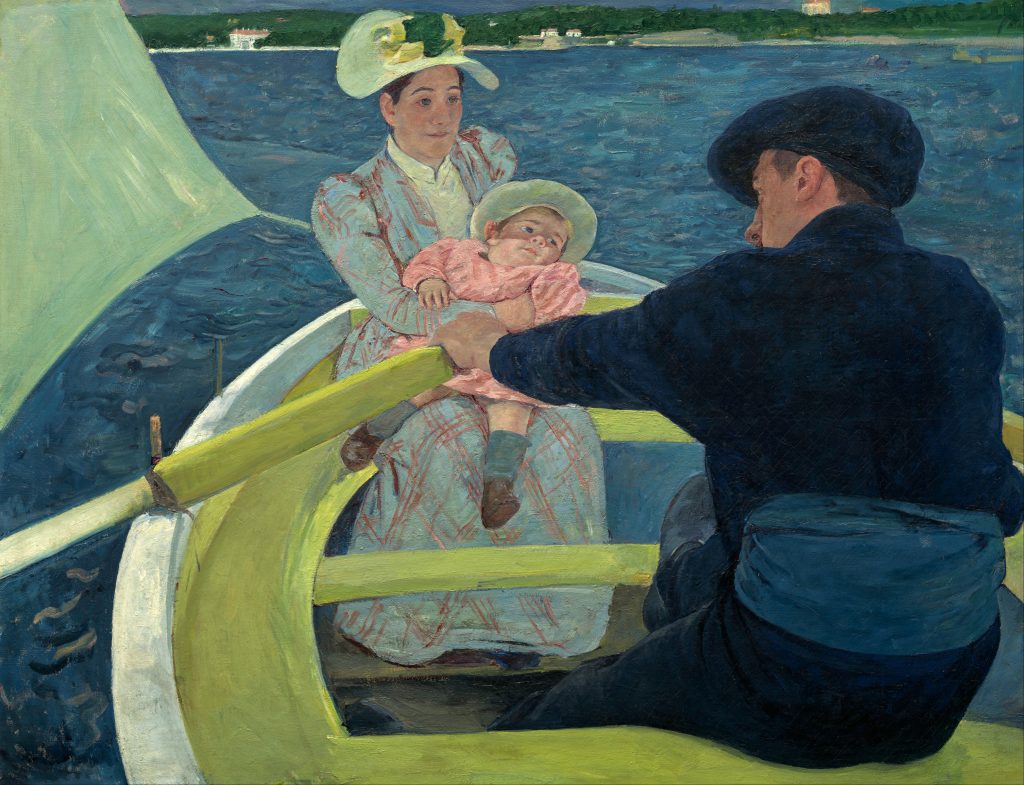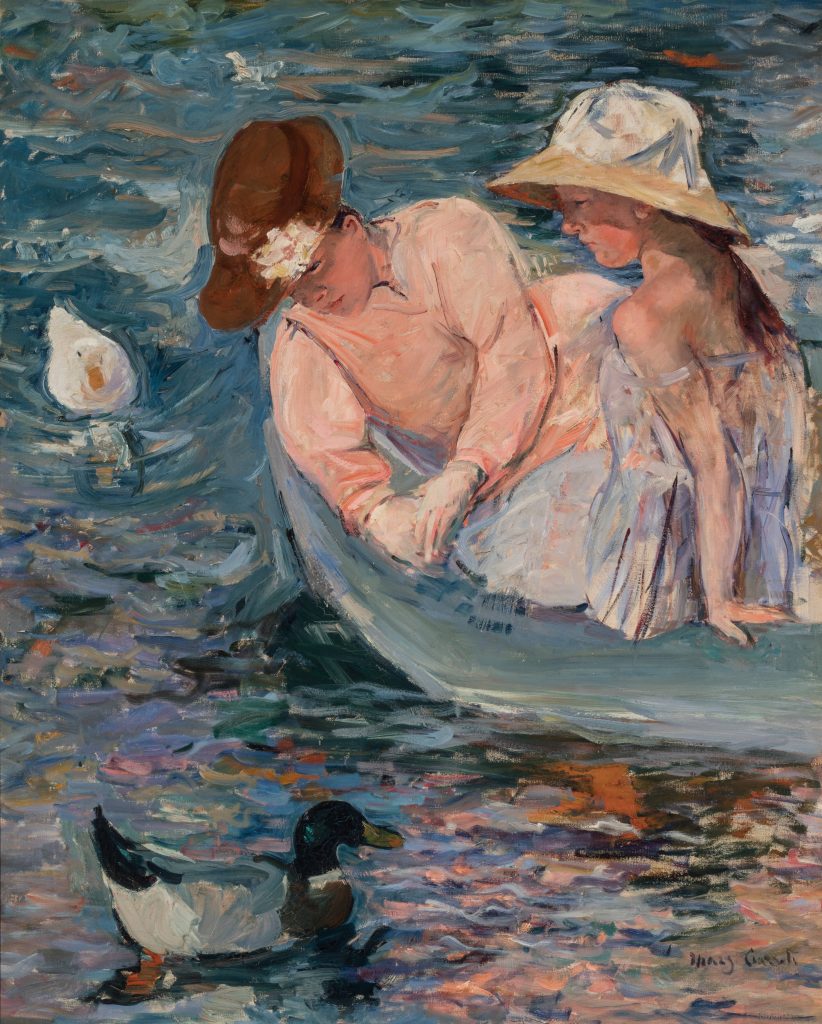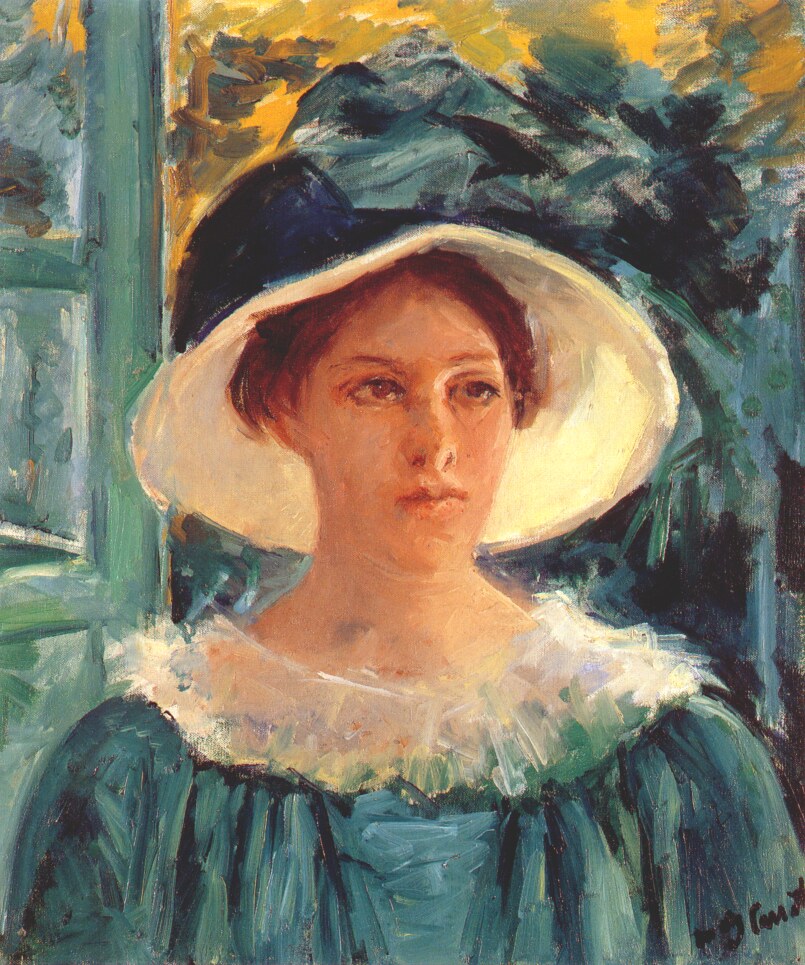

As anyone living abroad knows, distance from home can paradoxically clarify who you are while reshaping identity at the same time. For Mary Cassatt, the journey from industrial Pittsburgh to the cobblestone streets of Montmartre wasn’t just a change of address; it was an artistic awakening that would revolutionize how the world saw women, mothers, and the intimate moments that define our humanity. Her story resonates today for anyone who has ever wondered what might happen when you trade familiar shores for foreign possibilities.
In Pennsylvania and Paris
Born in Allegheny, Pennsylvania (now part of Pittsburgh) in 1844, Mary Stevenson Cassatt grew up in an upper-middle-class family that understood the value of worldly experience.¹ Her father, Robert Simpson Cassatt, was a successful stockbroker, and the family spent five years traveling through Europe during Mary’s childhood, visiting London, Paris, and Berlin—an experience that planted the seeds of her future transatlantic life.²
At fifteen, despite family objections, Cassatt convinced her parents to let her study at the Pennsylvania Academy of the Fine Arts in Philadelphia.³ But like many ambitious Americans, she quickly found herself frustrated by the limitations of her homeland’s artistic establishment. The slow pace of instruction and the condescending attitudes of male students and teachers drove her to seek something more.⁴ In 1866, at age twenty-two, she made the bold decision that would define her career: she moved to Paris with her mother and family friends as chaperones, ready to study with the masters of European art.⁵
An Impressionist Innovator
The Parisian atmosphere of the 1860’s was one of artistic upheaval, and Cassatt threw herself into this creative maelstrom. She studied privately with Jean-Léon Gérôme and spent her days copying masterworks at the Louvre, obtaining the necessary permits to join the ranks of “copyists”—mostly low-paid women who filled the museum daily.⁶ Her painting “A Mandoline Player” became the first work by an American woman accepted to the prestigious Paris Salon in 1868, alongside Elizabeth Jane Gardner.⁷

But Cassatt’s real breakthrough came through rejection. After years of frustration with the Salon’s conservative tastes, Edgar Degas invited her to join the revolutionary group known as the Impressionists in 1877.⁸ As art critic Arielle C. Frommer notes, Cassatt “eagerly accepted” this invitation to join “the most daring and novel painters of their time.”⁹ She became the only American officially associated with the movement, exhibiting in four of their eight exhibitions.¹⁰
Familial bonds through artistic eyes
What made Cassatt revolutionary wasn’t just her brushwork—it was her perspective. While male Impressionists painted café scenes and landscapes, Cassatt focused on the intimate spaces where women lived their lives: nurseries, drawing rooms, and theaters.¹¹ Her famous works like “The Child’s Bath” (1893) and “In the Loge” depicted women not as passive objects for male consumption, but as active participants in their own narratives.¹²

This focus wasn’t accidental. As Frommer observes, Cassatt had access to “domestic activities that many male painters were not privy to.”¹³ Ironically, though she painted countless tender scenes of motherhood, Cassatt herself never married, viewing matrimony as “utterly incompatible with a serious artistic career.”¹⁴ She was described by art critic Gustave Geffroy as one of “les trois grandes dames” (the three great ladies) of Impressionism, alongside Marie Bracquemond and Berthe Morisot.¹⁵
The Legacy of an Artist
Cassatt’s relationship with Degas defined much of her artistic development, though their friendship was complex. They shared similar backgrounds—both came from affluent families, studied in Italy, and remained unmarried—yet their personalities often clashed.¹⁶ When viewing Cassatt’s “Two Women Picking Fruit,” Degas reportedly commented, “No woman has the right to draw like that.”¹⁷ It was both a compliment and an indictment of the era’s limitations.
Her later years brought international recognition. France awarded her the Légion d’honneur in 1904, and she played a crucial role in introducing Impressionism to American collectors through her friendship with the Havemeyer family.¹⁸ Much of their collection now resides in New York’s Metropolitan Museum of Art, a testament to her influence on American artistic taste.¹⁹
When Cassatt died in 1926 at her château near Paris, she had spent sixty years as an American abroad, never losing her transatlantic perspective but forever changed by her adopted homeland.²⁰ Her story reminds us that sometimes the clearest view of home—and of ourselves—comes from the vantage point of foreign soil. For every American expatriate who has ever wondered about their place in the world, Mary Cassatt’s journey from Allegheny to atelier offers both inspiration and proof that crossing borders can mean more than changing geography—it can mean changing art itself.
References:
1-20. Mary Cassatt. Wikipedia. https://en.wikipedia.org/wiki/Mary_Cassatt
9, 12-14. Frommer, Arielle C. “Mary Cassatt: Impressions of the World Away from Men.” The Harvard Crimson, September 30, 2022. https://www.thecrimson.com/column/portrait-of-a-female-artist/article/2022/9/30/Mary-Cassatt-impressionist-female-artist-column/



